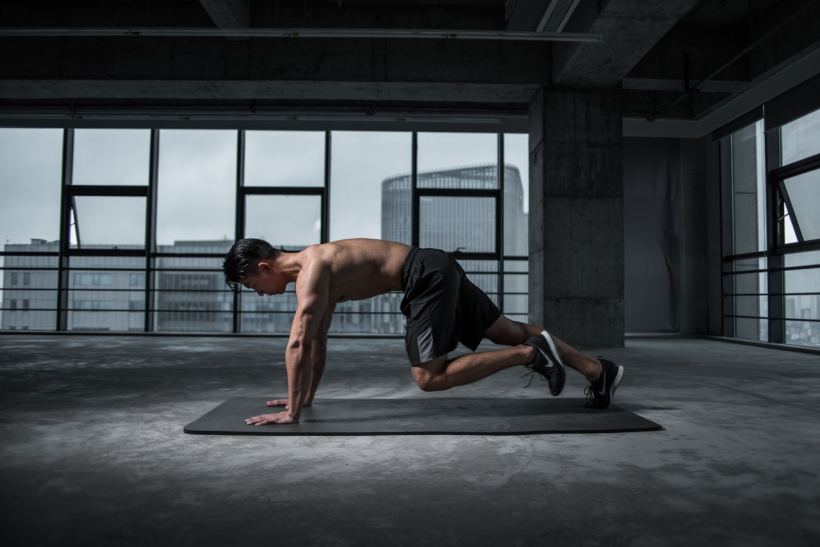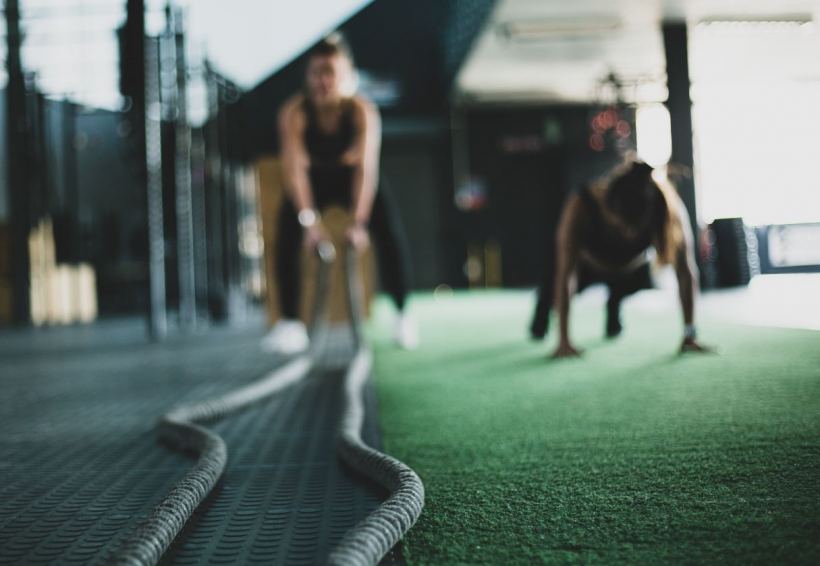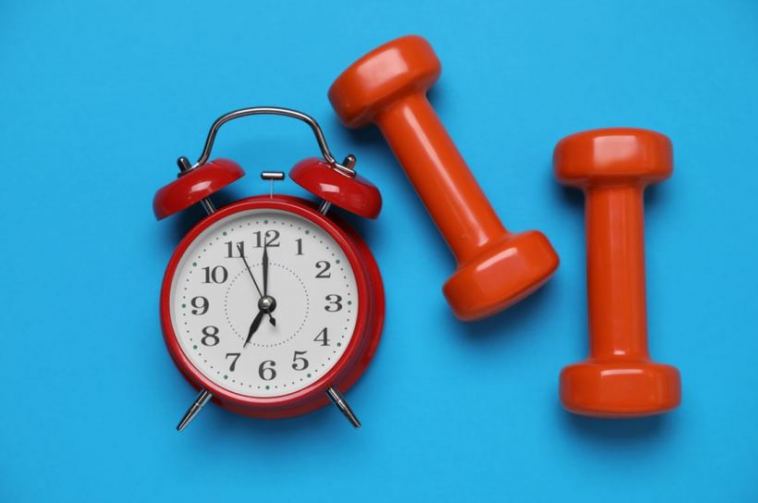- Like
- SHARE
- Digg
- Del
- Tumblr
- VKontakte
- Flattr
- Buffer
- Love This
- Save
- Odnoklassniki
- Meneame
- Blogger
- Amazon
- Yahoo Mail
- Gmail
- AOL
- Newsvine
- HackerNews
- Evernote
- MySpace
- Mail.ru
- Viadeo
- Line
- Comments
- Yummly
- SMS
- Viber
- Telegram
- JOIN
- Skype
- Facebook Messenger
- Kakao
- LiveJournal
- Yammer
- Edgar
- Fintel
- Mix
- Instapaper
- Copy Link
Introduction
These days, more than ever, people are finding it harder to make time in their day for a workout. But we know from the experts that at least 30 minutes of moderate physical activity is recommended daily to maintain a moderately healthy lifestyle. In fact, by doing this, you may be protecting yourself from several chronic diseases including:
- Cardiovascular disease
- Diabetes
- Cancer
- Hypertension
- Obesity
- Depression
- Osteoporosis
With so much evidence in favor of getting in a workout, the question still remains: How do you fit it into your schedule? Well, we have two great options to introduce to you today. Both are perfect for folks with a packed weekly calendar. First, we’ll discuss high intensity interval training (HIIT) and then circuit training. After that, we’ll end with some notes on nutrition and recovery, explaining how proper rest and supplements like CBD tinctures can really work to your benefit to maximize the time you’ve put into working out.
High Intensity Interval Training (HIIT)
 High intensity interval training, otherwise known as HIIT (pronounced “hit”), is exactly what it sounds like. It’s a period of intense working out followed by a short period of rest. During each interval, a different exercise is performed and the goal is to push yourself as hard as possible – even if that’s to the point of fatigue or exhaustion. It really helps with building your VO2 max levels, which will increase your endurance. Often, the intervals are timed, but they can also be measured by the number of repetitions you’re doing.
High intensity interval training, otherwise known as HIIT (pronounced “hit”), is exactly what it sounds like. It’s a period of intense working out followed by a short period of rest. During each interval, a different exercise is performed and the goal is to push yourself as hard as possible – even if that’s to the point of fatigue or exhaustion. It really helps with building your VO2 max levels, which will increase your endurance. Often, the intervals are timed, but they can also be measured by the number of repetitions you’re doing.
HIIT workouts last between 20 and 40 minutes depending on the number of intervals you’re performing that day, which makes them great for a tight schedule.
Generally, a HIIT workout is good for bodyweight exercises, cardio machines like treadmills or stationary bikes and smaller pieces of exercise equipment such as kettlebells and dumbbells. This also means a HIIT workout is something you can do comfortably from home. This eliminates commuting to and from a gym, which often takes twice as long as the actual HIIT workout itself.
To have a successful HIIT workout, you should definitely plan out what you’re doing before starting. You can go old school and write it out on paper if you’re confident and know all about the exercises you’ll be performing. Otherwise, a great way to tackle a HIIT session is to use an app. It’s especially good if you’re struggling for ideas or need guidance. The benefit of apps is that many will also have timers in them that will tell you when your interval is finished and keep you accountable on your brief rest periods.
Circuit Training
 Circuit training has some things in common with HIIT, but it remains its own beast. Generally, circuit training is going to target a variety of muscle groups that you alternate focus on during a series of different exercises. The goal is to perform one and then go right into the next with as little rest between them as possible. In this way, you’ll be resting one muscle group while the other is working. For example, you might start off with shoulders, then do legs, move on to the chest and finish with back.
Circuit training has some things in common with HIIT, but it remains its own beast. Generally, circuit training is going to target a variety of muscle groups that you alternate focus on during a series of different exercises. The goal is to perform one and then go right into the next with as little rest between them as possible. In this way, you’ll be resting one muscle group while the other is working. For example, you might start off with shoulders, then do legs, move on to the chest and finish with back.
Because of the little amount of rest between exercises, your typical circuit training workout, even with a proper warm-up, is only going to take around 30 minutes, which is ideal for a busy schedule.
Generally, a circuit training workout is going to incorporate more exercise equipment such as dumbbells, barbells, kettlebells, battle ropes and various weight training machines. It will also have bodyweight-style exercises that might incorporate some equipment like pull-up bars or plyometric boxes. For this reason, you’ll either need your own home gym setup or plan to make a trip to the gym. If you live or work close to your gym, that won’t be a problem – and you’ll easily be able to sneak away for a quick workout almost daily.
Just like with a HIIT workout, circuit training takes planning. You’ll want to think of three to four major muscle groups that you want to target with an exercise to perform that suits each group. You can repeat the circuit two or three times. You can combine as many circuits into a workout as your schedule allows for, targeting the same muscle groups but using different exercises. For example, circuit one might be bench pressing for your chest, front barbell squat for your legs and lateral pulldown for your back. The second circuit could be lying dumbbell flyes for your chest, a seated leg curl machine for your legs and single-arm dumbbell rows for your back. The combinations are endless, and you can change it up each time to keep it interesting. Just keep track of your numbers using an app or notepad.
Notes On Nutrition and Recovery
Both HIIT workouts and circuit training can be really tough on the body because you’re doing a lot of work in a short amount of time. This means that you’ll have to fuel yourself properly to recover well.
Getting the proper number of calories from high quality and natural protein, fat and carbohydrate sources is going to help a lot with your recovery. And keep in mind here that eating at a caloric deficit is only good if you’re trying to drop weight. Even then, your body needs fuel if you want it to keep going. If you’re keen to build muscle and bulk out, you may even need to up your food intake.
If you’re eating well and still struggling with your recovery, meaning sore muscles and joints, you can try using a CBD topical cream on affected areas during your rest day. It may help ease the pain of your last workout and get you ready for the next one.
And, of course, nothing is better for recovery than proper hydration and a good night’s sleep. So, drink that water and get to bed on time if you expect to fit your next workout into the busy day ahead.
About Theresa Duncan
Originally from Detroit, MI, Theresa has been offering health and fitness advice for the last 30 years while working as an engineer. She decided to turn her passion into a profession, and finds nothing more satisfying than helping others reach their health and fitness goals.

